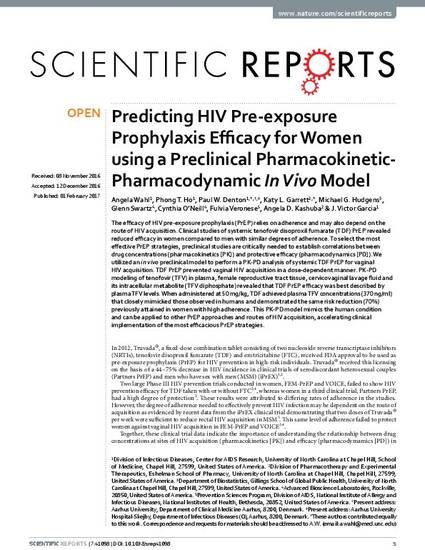
The efficacy of HIV pre-exposure prophylaxis (PrEP) relies on adherence and may also depend on the route of HIV acquisition. Clinical studies of systemic tenofovir disoproxil fumarate (TDF) PrEP revealed reduced efficacy in women compared to men with similar degrees of adherence. To select the most effective PrEP strategies, preclinical studies are critically needed to establish correlations between drug concentrations (pharmacokinetics [PK]) and protective efficacy (pharmacodynamics [PD]). We utilized an in vivo preclinical model to perform a PK-PD analysis of systemic TDF PrEP for vaginal HIV acquisition. TDF PrEP prevented vaginal HIV acquisition in a dose-dependent manner. PK-PD modeling of tenofovir (TFV) in plasma, female reproductive tract tissue, cervicovaginal lavage fluid and its intracellular metabolite (TFV diphosphate) revealed that TDF PrEP efficacy was best described by plasma TFV levels. When administered at 50 mg/kg, TDF achieved plasma TFV concentrations (370 ng/ml) that closely mimicked those observed in humans and demonstrated the same risk reduction (70%) previously attained in women with high adherence. This PK-PD model mimics the human condition and can be applied to other PrEP approaches and routes of HIV acquisition, accelerating clinical implementation of the most efficacious PrEP strategies.
Available at: http://works.bepress.com/paul-denton/7/

© 2017 The Authors.
https://doi.org/10.1038/srep41098